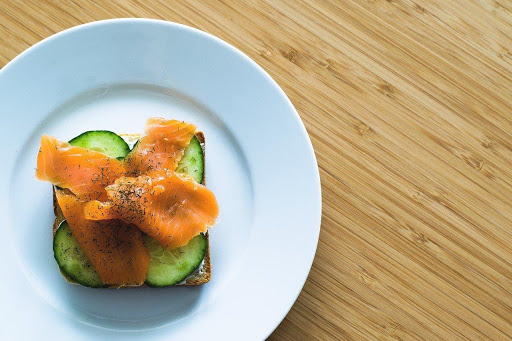

HEALTHY DIET HABITS: PORTION AWARENESS TIPS AND TRICKS

Starting a diet is easy but maintaining it and making sure you get the best out of it is no simple task! One of the biggest diet mistakes we tend to fall prey to is not paying attention to portion control. When we are following a diet, we tend to think that eating more of ‘healthy’ food is harmless and contributes to our weight loss journey, when in fact, that is incorrect! The four basic must-dos of your weight loss journey are portion control, saying no to processed food, saying yes to superfoods and hitting the gym. This article will guide you through the basics of following portion control.
1. It’s all about Energy Density
Calories are calories no matter what the source. In their article, “What is the role of portion control in weight management?”, author B.J. Rolls (Dept of Nutritional Sciences, The Pennsylvania State University, USA) mentions that large portion consumption leads to increased energy intake which, in turn, culminates into effects lasting over weeks and end up contributing to weight gain and obesity in the long term. Energy intake is the total calories you consume. It is related to the energy densities of the foods you consume. Energy density is the amount of energy (calories) in a given weight of the food. Foods dense in energy are rich in fat/sugar and less energy-dense foods have high amounts of fiber. So instead of eating small portions of energy-dense foods, try to incorporate more foods with less energy density.
Eat less of:
a. Processed food
b. Saturated and solid fats
c. Trans fat
d. Salt
e. Baked goods.
Eat more of :
a. Lean protein (seafood)
b. Whole grains
c. Low-fat dairy items
d. Canola oil
e. Olive oil
f. Fruits and vegetables
2. The 20 Minute Rule
Don’t be so quick to go for second servings! Even though you think you need that second serving, just wait for 20 mins. It can take some time for you to feel full after you have eaten. If after 20 mins of waiting you don’t feel hungry you can finish off with a glass of water and end your meal. You have to avoid the temptation of immediately jumping in for a second serve. The twenty-minute waiting rule will help you train your brain to feel satisfied after eating a controlled portion of food.
3. Serve The Right Size
The right portion size may differ from person to person, depending on our dietary habits, metabolism, and age. When trying to cut down on portion size you must begin with measuring every meal. Use cups to measure your meal and stick to that restricted portion. Do not starve yourself but do not overeat. One way to trick your mind into thinking that you have had your fill is to use smaller plates such as salad plates or luncheon plates.
Downsizing of healthy portions is also important. Divide your plate in half, fill one half with fruits or vegetables and the other half with healthy carbs and protein. Use calorie counting apps to know how much you need to eat for your daily required calorie intake. A moderately active woman requires 1800 - 2000 calories per day and an active man requires 2000 - 2800 calories per day. Build your diet plans around the required amount of calories. Don’t keep too many food choices, otherwise, you might run the risk of overeating and unnecessary snacking. You can also try replacing one meal with a smoothie of your choice.
4. Don’t Eat While Watching TV
Watching the Television while eating makes your chew improperly and distracts you from how much food you are consuming. This results in overeating great amounts of food in a short amount of time. The longer you watch the TV the more you will binge. Eating should be an exercise in mindfulness. You must concentrate on your food, take in the flavors and chew slowly. Properly chewing your food, you will allow the enzymes in your saliva to act on it and digest it better, thus increasing your metabolism. Drinking water 30 mins before a meal also helps in this process.
5. Meal Size Control While Eating Out
Eating out while dieting can be a conundrum, these few guidelines will help you navigate through it. Always keep your calorie tracker app handy, ask the servers about all the ingredients that go into the meal you’re planning to order so that you can look out for secret calories. Usually, one serving size is enough for two people so you can divide your meal. Another trick is to get half of your meal packed before it is served. One must always order light starters such as salads and soups and avoid any fried food.
6. Determining Food Portion By Using Your Hand
Measuring portion sizes simply by using your hand is a simple but very effective method! This nifty trick will always keep you on track. A clenched fist is the equivalent of a cup, which is the ideal serving size for a plate of rice. The front of a closed fist is half a cup, recommended serving size for almonds. Two handfuls of vegetables and one handful of fruits are enough for one day. Your palm represents one portion of lean protein such as fish or chicken. The fingertip of your index finger is one teaspoon, this is the amount of butter or oil you should consume in a day.
Initially, it might be difficult to stick to the portions you aspire to eat but don’t lose hope. Keep a food diary to track your eating habits. Take one day at a time and contact your nutritionist or dietician for a more structured food regime.
References:














